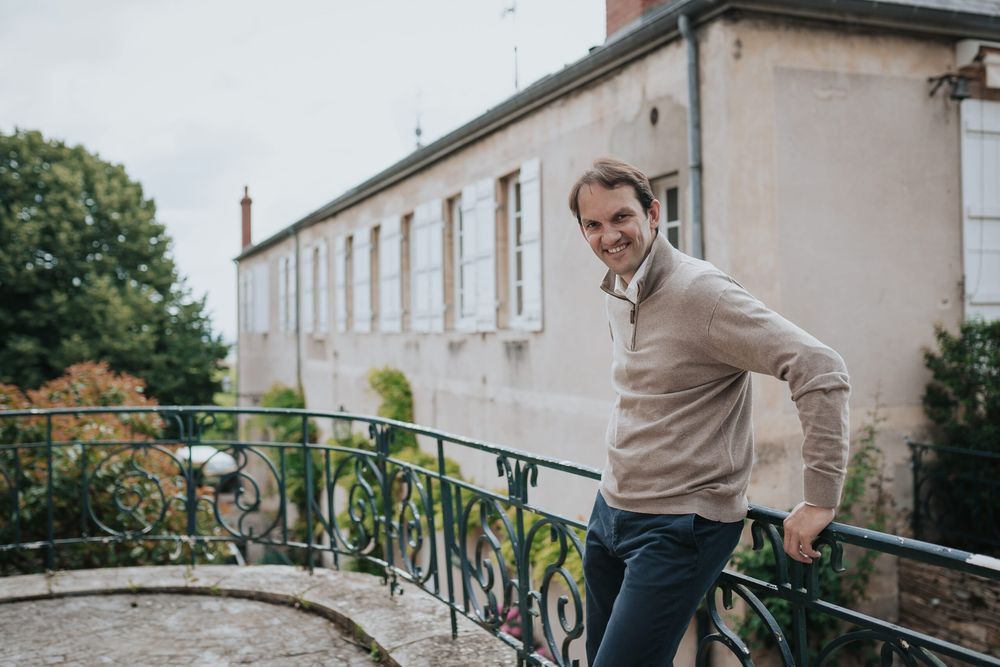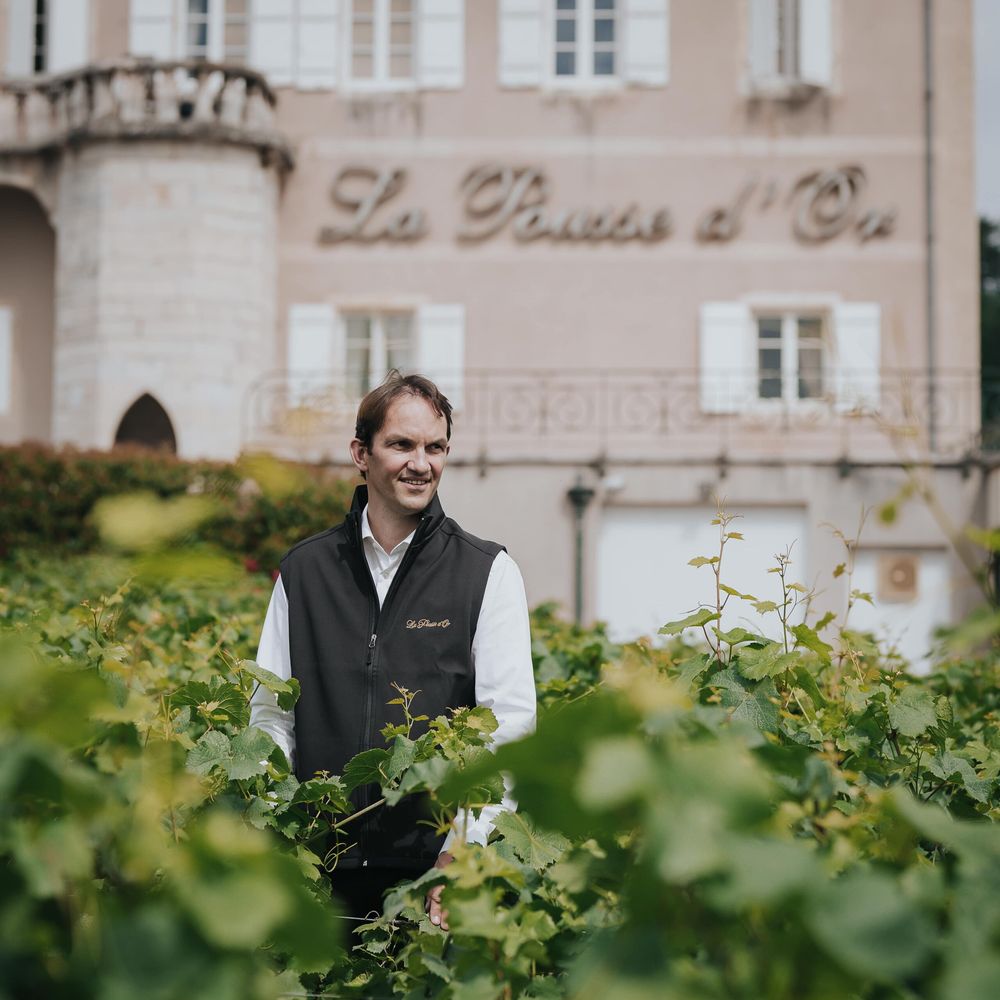Domaine de La Pousse d’Or owner and winemaker, Benoir Landanger, explains just why he is so excited to be able to make wines in Les Echezeaux and Charmes-Chambertin.
Can you tell us about Domaine de La Pousse d’Or and how it has developed over the years?

Benoit Landanger is the 11th owner of Burgundy’s Domaine de La Pousse d’Or since the French Revolution
The domaine with founded as a direct result of France’s most famous event, the French Revolution in 1789, when it was called Bousse d’Or, with a B. It has subsequently moved through the hands of 11 owners since then. On the back of the reputation of several excellent vintages in the late eighties and early nineties, Gerard Potel, sold the estate to a consortium of Australian investors, before I bought it in 1997. It went through a heavy investment programme bringing in state-of-the-art facilities and infrastructure to raise all aspects of Pousse d’Or’s game, including starting the conversion of the existing vineyards to biodynamism. Over the past 25 years, Domaine de La Pousse d’Or has carved a place amongst the very elite of Burgundy marques, and is considered a modern day benchmark of Pinot Noir in the Côtes de Beaune, mostly in the communes of Volnay and Corton.
You have just announced you are adding to your Grand Crus – what is the news?
Domaine de La Pousse d’Or has recently acquired vineyards in Echezeaux and Charmes-Chambertin which means that we now own precious Grand Cru vineyards in the Côtes de Nuits too. Prestige sites like this, come up extremely rarely. We decided to invest in these precious holdings, which will serve to add diversity and balance to Pousse d’Or’s already prestigious and precious inventory of vineyards.
What is it about the appellations of Les Echezeaux and Charmes Chambertin that excite you the most?
Les Echezeaux and Charmes Chambertin are two of the most famous names in wine, and are in a district that makes distinctly different wines from Volnay, Corton and and our other crus .
What do you hope they can offer as a point of difference to your other Grand Crus?
We are in a very lucky position to be able to sell every bottle we make, as popularity for Domaine de La Pousse d’Or way outstrips available supply. Owning vines in Les Echezaux and Charmes Chambertin allow us to offer a more comprehensive and diverse portfolio of red burgundies to our loyal followers and collectors.
How many hectares of vines do you now manage?
Prior to the acquisition of the new Grand Cru vineyards in the Côtes de Nuits, there was 13 hectares. The vineyard holding is closer to 18 hectares now. La Pousse d’Or now consists of seven Grand Crus, three Monopoles and 11 Premier Crus.
How do you see the 2020 vintage in terms of quality?
2020 yielded intense, ripe, and long-lived reds, and generous grand, classically styled whites. The wines have great energy like the 2019s but probably stylistically better reflect the 2017s
Were you affected by the poor 2021 vintage and how will you cope with demand and supply of your wines?

Benoit Landanger says taking on extra premium vineyards will allow it to grow its exports and keep up more with demand for its wines
Clearly 2021 was a so-called winemaker’s vintage, with some deft and skilful winemaking required. We think, despite everything, our wines show great typicity and class, despite nature’s effort to ruin the vintage. The wines have lovely perfume and ripe tannins.
What do you see as the key winemaking trends taking place in Burgundy?
Global warming is always on everybody’s lips, and viticulture, and increasingly, oenology has had to adapt in order to combat the increased heat and bizarre weather patterns in the region.
What are the most important export markets for your wines and has that changed at all in recent years?
All markets are of course important to us here at La Pousse d’Or, there are the bigger ones, however, which include the US. China is becoming increasingly important as the knowledge about our wines spread amongst the wine lovers in the country. This is following a trend which we have seen in Japan, which is a historically very good export market for us.
What are the outstanding ambitions of the domaine and how do you hope to achieve them?
To continue to make the highest quality of wine possible and have the purest nectar of all the plants in the vineyards. To achieve it, we are working with biodynamism and with each vintage we are thinking of what we can do better. We are always looking for incremental gains, no matter the time and cost – this is really our philosophy.
What do you see as the biggest opportunities still for Burgundy?
The biggest opportunity for Burgundy? There are many answers to this question but we are hopefully part of them.
And its biggest challenges?
The biggest challenge is to keep some family domaine’s in the next decade. I think this will become more and more difficult.
- You can find our more about the Domaine de La Pousse d’Or at its website here.









































